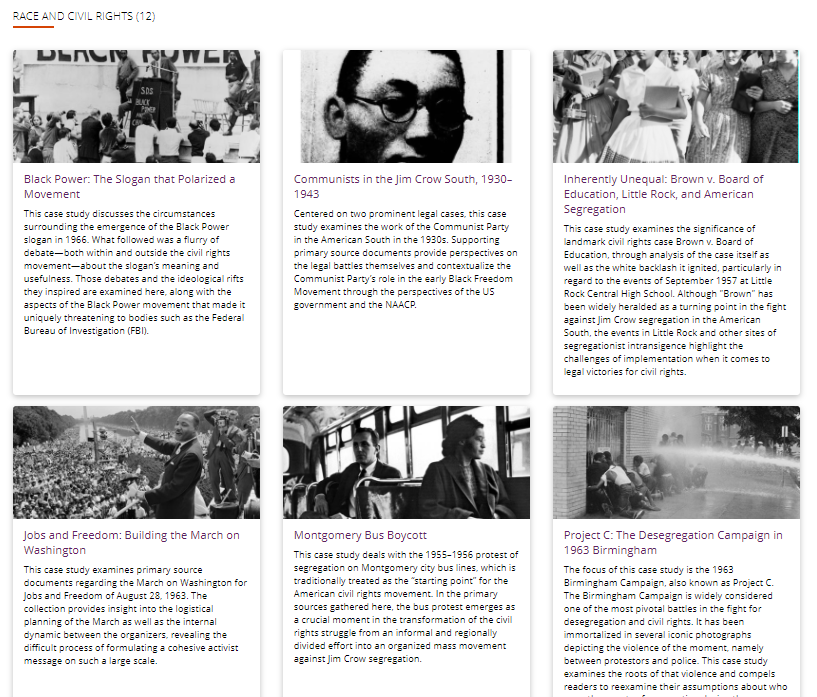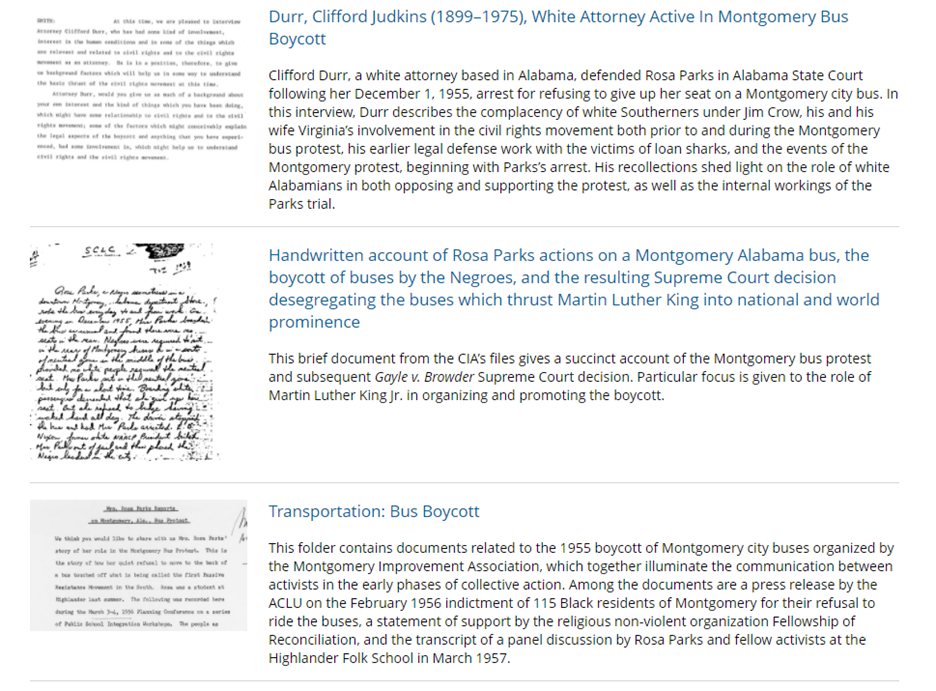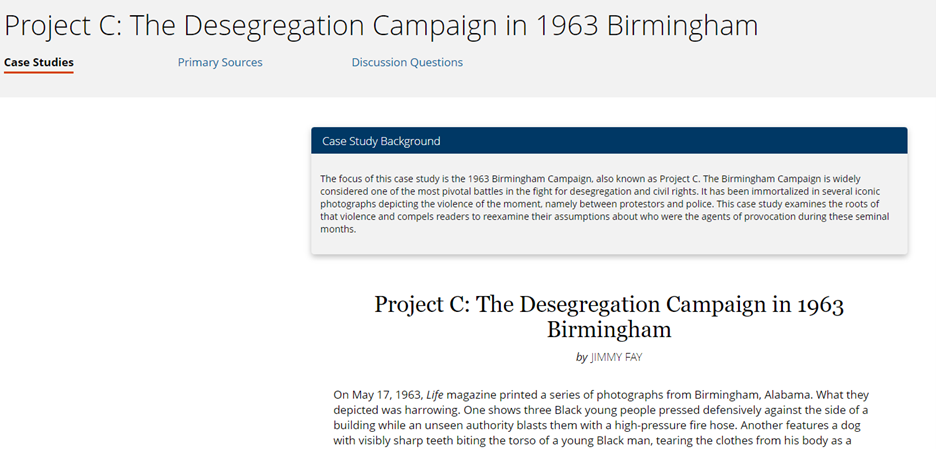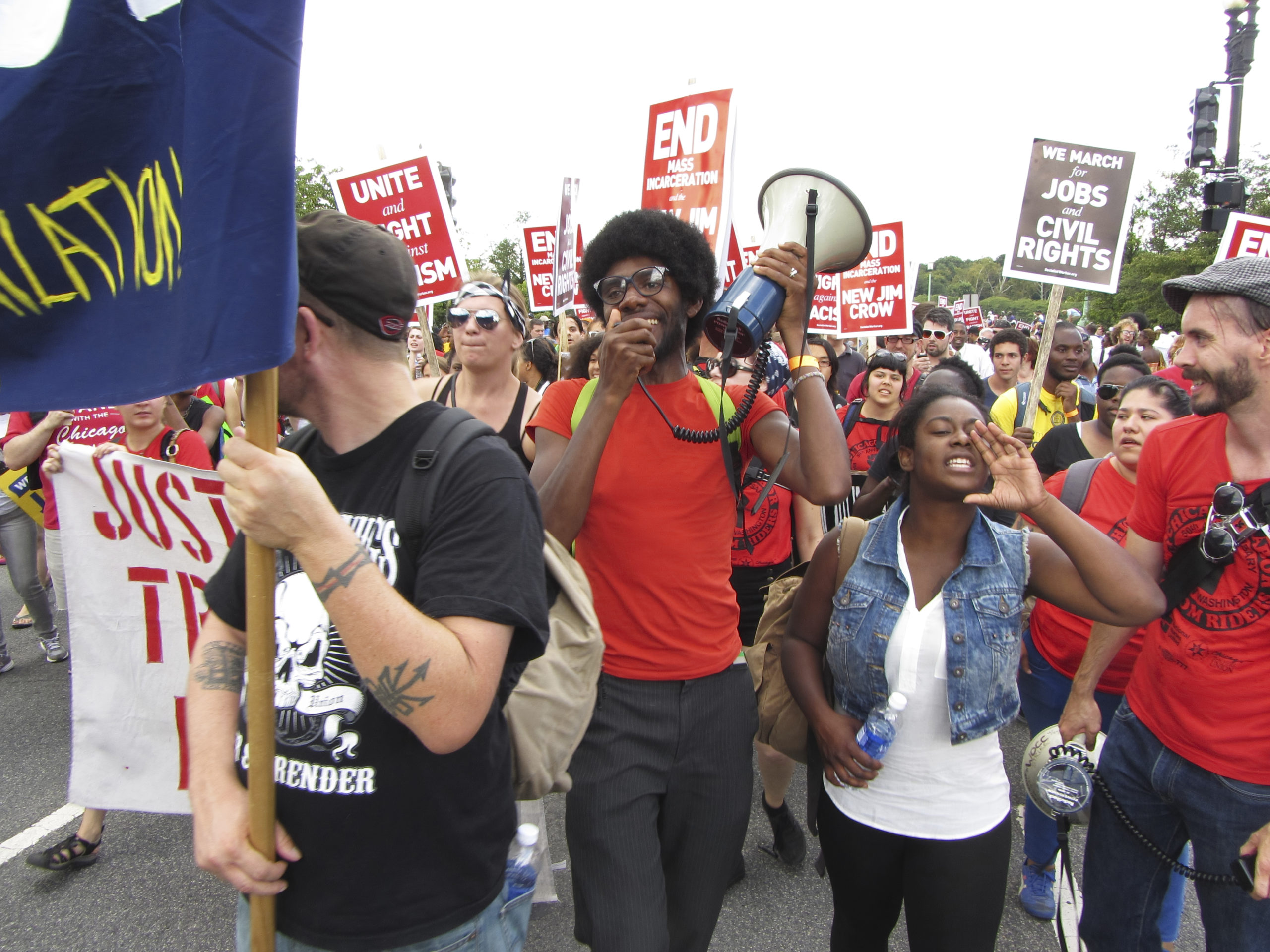| By Rebecca Parks |
In August 2019, the New York Times Magazine published a long-form journalism project, known as the 1619 Project, on the 400th anniversary of the arrival of the first enslaved persons from Africa to colonial Virginia. The collection of essays, commentaries, and poems aimed to reorient U.S. history to centralize slavery’s impact on all facets of life then and now. While this project was rejected by those committed to a traditional view of American history, for many it served to reveal voices long ignored and shined a light on a lack of awareness of content that represents multiple perspectives on America’s past. Learning about history from those who lived it—particularly when it comes to controversial topics such as race—has multilayered benefits. Primary sources present a multitude of perspectives, avoiding the sort of reductionist generalizations that can be introduced when viewing the past through the lens of the present.
This belief is at the heart of the Gale Case Studies product, which is releasing its newest module, Race and Civil Rights, this month. The curated collection of primary sources illuminates the civil rights movement, including the years leading up to the major events of the 1950s and 1960s as well as what came after in the 1970s. The primary sources are organized into case studies, with each case study focused on a seminal event or topic. Every case study in the module has an introductory essay that provides context for the primary sources, a description of the primary sources, and discussion questions that encourage students to make connections between past and current events.


Gale Case Studies: Race and Civil Rights takes a deep dive into the:
- 1954 Brown v. the Board of Education of Topeka, Kansas Supreme Court ruling that overturned legal segregation, as well as efforts to force compliance with this ruling through the busing of Black students to integrate white schools nearly 20 years later
- 1955–1956 Montgomery Bus Boycott that successfully desegrated public transportation in Montgomery, Alabama
- 1963 March on Washington and the precursor event that never took place, the 1941 March on Washington
- 1963 campaign to desegregate the city of Birmingham, Alabama, known as Project C (for “confrontation”), which resulted in footage of police brutality that pricked the nation’s conscience
- 1965 marches from Selma, Alabama, for voting rights
- Sit-in movement of the early 1960s
Students can also learn about the philosophical underpinnings of the Black Power slogan and the Black Panther Party, as well as the influence of Cold War politics and the Communist Party on the civil rights movement.

Documents from those involved in the Southern Christian Leadership Conference (SCLC), the Student Nonviolent Coordinating Committee (SNCC), the Black Panther Party, the American Civil Liberties Union, and the Communist Party reveal differing approaches to achieving civil rights for Black Americans, which sometimes put them at odds with each other. For example, SNCC’s embrace of the controversial Black Power slogan was seen as counterproductive to the SCLC’s emphasis on nonviolent protest. The documents in Gale Case Studies: Race and Civil Rights reveal that even the event that most clearly highlights the unity of those involved in the civil rights movement—the famous March on Washington in 1963—required considerable compromise, with those demanding for greater economic opportunities for Black Americans reluctantly toning down this message in deference to a focus on political rights.
The collection also highlights the perspective of those in government through declassified documents that detail the FBI’s surveillance of Black leaders and organizations—particularly the suspicions of leaders such as J. Edgar Hoover regarding the connection between the civil rights movement and the Communist Party, then seen as a major threat to American democracy. The government’s sometimes adversarial stance toward these organizations, which included covert campaigns to undermine them—as in the case of the Black Panther Party—is rendered more complex when the government is called upon to protect civil rights protestors. This was seen in documents from government officials regarding the use of troops to protect the 1965 marches from Selma, Alabama, for voting rights.

Gale Case Studies: Race and Civil Rights is designed with both seasoned researchers and those new to digital literacy in mind. The wealth of primary sources available allows search-savvy students to explore many different angles, while the product’s guided experience provides more direction to those who want it. The product’s learning management system (LMS) integration, as well as the discussion questions that accompany each case study, makes it an ideal classroom tool for courses in history, sociology, public policy, political science, communications, and Black studies.
Gale Case Studies: Race and Civil Rights joins existing modules Intersectional LGBTQ Issues, Public Health Issues, and Political Extremism. Additional modules are planned for Women’s Issues and Refugees and Migration early in 2022.
991 – CN9671 – Blauw – Nike Air Max 1 By You Custom herenschoen – nike air max lays blue cheese commercial actor | nike dunk force wedge , Air Jordan 1 Trainers — Ietp


